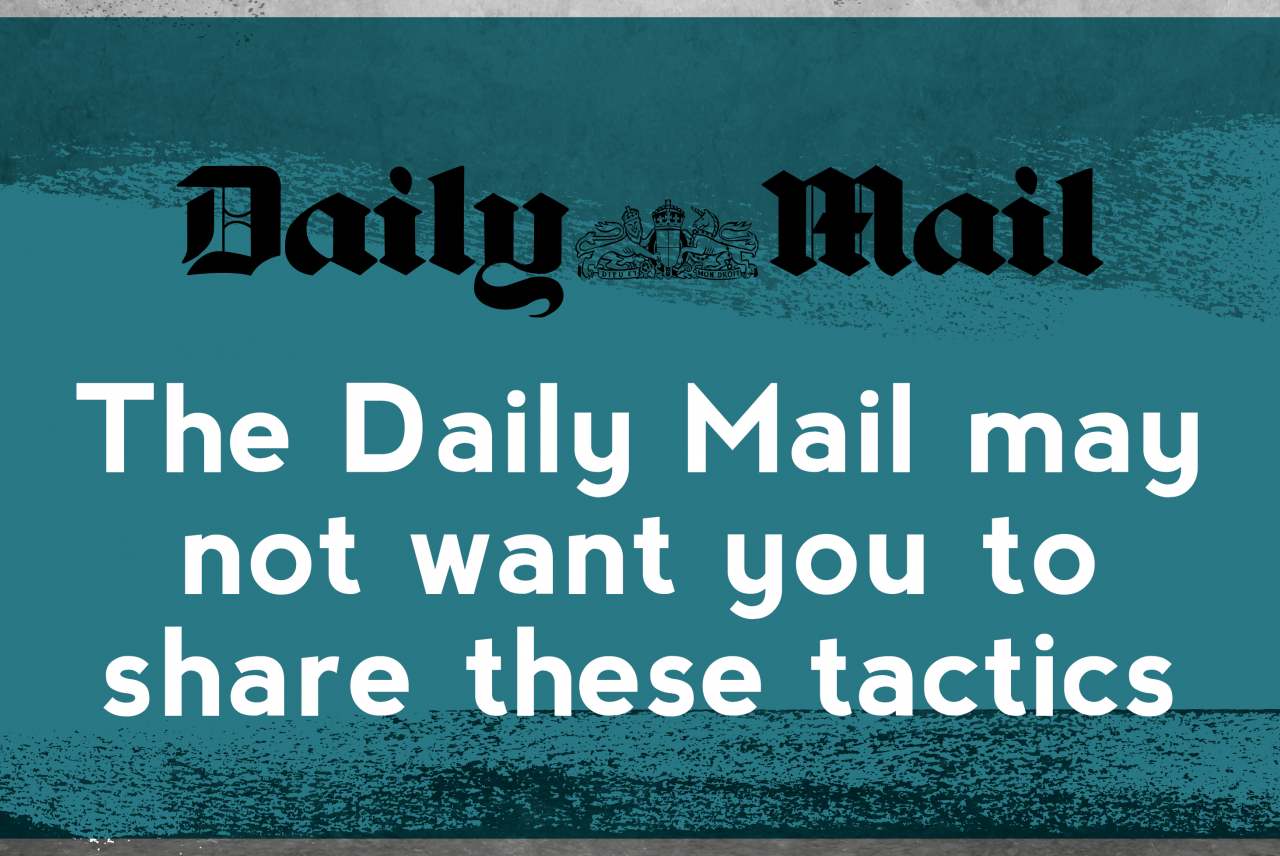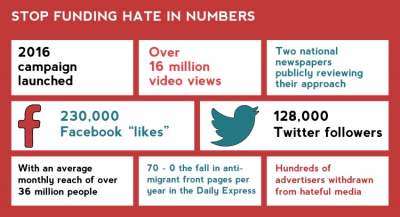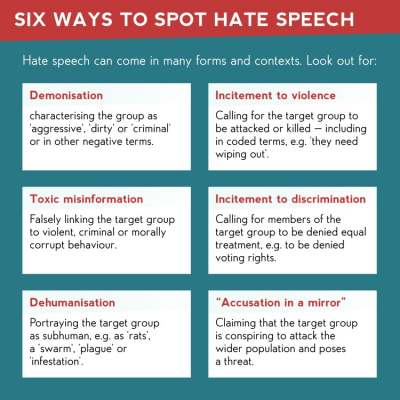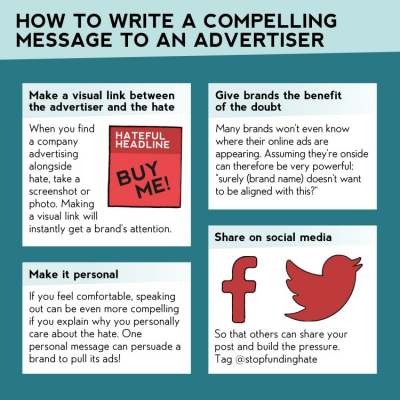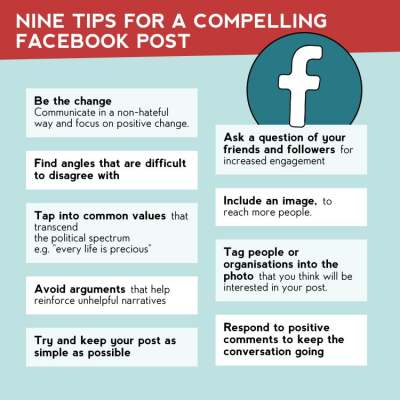Some UK publications are using hateful content to generate sensationalist stories, increase sales and push social division. Advertisers are a major part of their business model, providing up to half of many companies’ revenues. With hate crime on the rise in the UK, we can make hate unprofitable by persuading advertisers to pull their support from these publications.
Together with Stop Funding Hate, we are launching a new set of guides showing how you can help stop the hate and social divisiveness present in our media, either as an individual or as an organisation or campaign group.
Since its launch in 2016, Stop Funding Hate has:
- Persuaded hundreds of advertisers to move their advertising budgets away from hateful media.
- Seen two national papers, with an average monthly reach of over 36 million people, review their approach to hate speech.
- Seen the number of anti-migrant front pages in the Daily Express fall from 70 in 2016 to 0 in 2018.
